3rd Quarter 2023
- stacylpearsall
- Jun 29, 2023
- 28 min read

TABLE OF CONTENTS
EBRA MEMBER HIGHLIGHT: Dr. Hernando Plata and Lisa Martin
AROUND THE WATER TROUGH
HEALTH & WELLNESS SECTION
Color Genetics Explained
BARN HACKS, TIPS & TRICKS
BUSINESS SECTION


Silver Meadows Farm
Story by Stacy Pearsall and Photos Provided by Silver Meadows Farm
Vibrant colors of yellow, orange, and red stretch across the sky signifying the dawn of a new day while fog gently rolls across deep green, dew-drenched hills. A winding driveway between two lush pastures terminates at a Dutch-style barn, where the clanking of buckets and a woman’s voice can be heard emanating from its vertically hung planks. A sign on the drive out front reads, “Silver Meadows Farm.”

It’s just past 6 a.m. Kentucky-time and a dark-haired woman is toiling away, feeding six hungry gentle giants – all the while, talking to them like old friends. Given her short stature, the draft horses who tower over her seem to consciously avoid crowding her. They quietly follow alongside as she turns them out to the fields after breakfast. When the last horse is released, she pulls a cell from her pocket, making a call as she hikes back up the drive to the two-story blue house on the hill.
“Just checking in,” she says slightly winding with a hint of fatigue in her voice. For most married couples, a 6:30 a.m. call would be odd, however for Dr. Hernando Plata-Madrid and Lisa Martin, it’s everyday life. Together, they operate their own equine veterinary practice, Plata, LLC, where they service hundreds of horses across the greater Versailles, KY, area. By 6:30 a.m., Dr. Plata is on his third farm visit of the day and Lisa’s own busy schedule is well underway too.

“I really like it when she calls me,” Dr. Plata says, smiling. “She’ll call me three or four times a day just to say hi. She seems to know when I’m stressed and tired – especially during peak breeding season when I’m treating 75 to 100 mares a day. It’s hard, but hearing her voice… I love that.”
With a final, “Love ya,” Lisa ends the call and stuffs the phone in her pocket as she walks into the house. Their youngest child of three, Griffin, who is 21, sits waiting for breakfast. It’s treatment day for him, and he knows the routine – breakfast, shower, occupational therapy. The horses, the clients, the kids, they all rely on Lisa. Perhaps no one more than Griffin, who has autism spectrum disorder, is non-verbal, and requires home care 24/7. Griffin’s therapy sessions aren’t just beneficial for him, they provide Lisa a window of opportunity to step away from caregiving, so she can manage the business, generate invoices, and return clients’ calls.

If she’s lucky, Lisa might have time to call and catch up with her eldest daughter, Gabrielle, 24, who just completed her masters in clinic mental health counseling at Ohio State, or her middle child, Mackenzie, 23, who is working toward her master’s degree in secondary education at the University of Kentucky. Like Hernando and Lisa, their girls stay busy, but staying in touch is priority-one. Also like their parents, both young women are smart, educated, and driven.
When Lisa was their age back in Norfolk, VA, she was pursuing a dual bachelors in criminal justice and psychology from Old Dominion University, while also managing a barn of hunter-jumpers and dressage horses. She never formally put her degrees to use after graduation, but it turns out her psychology studies proved useful when it came to managing foals and later, raising children.
It was at the barn she managed, where she and Hernando first clapped his eyes on each other.
“I could see she was a party animal,” Hernando recalls, laughing a bit. “I had just finished my Masters in Reproduction and Internship at the University of Missouri and took a position at my friend’s practice in Virginia. Our clinic was contracted to service her barn, so that’s where we met. She was always nice to me though, despite my English language deficiency.”

Dr. Hernando Plata-Madrid grew up near Bogota, Colombia, and spent most of his time on his family’s cattle farm and assisting his father, Dr. Jaime Plata-Alvarez, as he treated his equine clients. When not working or attending classes at La Salle University, Hernando went on week-long riding treks, traversing the Colombian countryside on the backs of his maternal grandfather’s Colombian Criollo horses, stopping at night to sleep under the stars from tree-hung hammocks, and eat hearty meals provided by the farmers and landowners.
“I didn’t do any showing when I was young like Lisa,” explains Hernando. “In Colombia, you must be part of ‘a club’ and those were for the more affluent types. I learned horsemanship from the llaneros [Colombian Cowboys] on the farm.”
Before completing his Doctor of Veterinary Medicine degree, Hernando made a trip the USA in search of draft horses to bring back to Colombia to improve their family farm’s heavy horse stock. At the time, they had a smattering of drafty-type horses, whose lineage was likely a mix of Percheron, Clydesdale, American Belgian, and indigenous breeds.
“In 1980, I visited Anne Harper’s Milkwood Farm to see some Brabants,” remembers Hernando. “Her stallion Babar [Babar de Wolvertem] was unlike any other draft horse I’d seen before. His size and movement was impressive. We purchased one of his grandsons from Pennsylvania and brought him back to Colombia to be our herd sire. He covered our mares and was leased to other farms from time-to-time. He was a nice horse.”
By the time Hernando met Lisa in 1997, his passion for draft horses, particularly Brabants, grew into an obsession. However, the demands of his burgeoning veterinary career meant he only had time to care for other people’s horses in those days. Like most horse-crazed people, that didn’t stop him from window shopping. He stayed in touch with Anne Harper over the years and built relationships with other Brabant breeders across North America.
“Brabants were always his thing,” remembers Lisa, smirking a bit. “I liked my warmbloods.”
Surprisingly, Hernando and Lisa’s preferences for horse breeds seem to mirror their personalities perfectly. Lisa being warmblood-like in her pursuits – outgoing and bold, tackling challenges head-on. There’s no obstacle too high. On the other hand, Hernando takes a more draft horse mentality approach to life. He’s always positive with a steady pace and nose-to-the-grind approach to work.

In the end, it was Lisa’s warmblood Hanoverian mare, Hannah, who brought the two together. Though Lisa initially found Hernando to be a stick in the mud and Hernando perceived Lisa to be a bit frivolous, these two opposites ultimately did attract.
“She wanted her mare bred,” proclaims Hernando in a mock-exasperated tone. “And she just had to micromanage everything!”
“We did get her bred,” interjects Lisa, smirking.

Hernando and Lisa were married January 28, 1998, and two days after saying, ‘I do’, they moved to Lexington, KY. Hernando became a resident veterinarian at a large breeding farm, practicing internal and reproductive medicine while Lisa managed the home front. In rapid succession, the newlyweds welcomed their three children, Gabrielle, Mackenzie, and Griffin. From then on, life went from busy, to hectic.
Once the two eldest children were grown and off to college, Hernando and Lisa realized they had time and opportunity to start their own practice, so in 2014 they founded Plata, LLC. Two years later, they purchased land and their first two grade Brabant mares, Salsa and Chipotle. Given their last name, Plata, means silver in Spanish, and the rolling quicksilver fog of the Kentucky countryside, they named their farm, Silver Meadows.


Hernando’s dream of owning and breeding Brabants was coming to fruition and his partner in life, Lisa, was right there making that dream a reality too.
In 2018, they bred and settled both their mares using imported frozen semen from Matteo van ’t Reitenhof resulting in two beautiful blue roan foals. Later that year, they imported three yearlings; two were fillies, Lidia van Hoeve Ruth (EB0013) and Nicole van de Vinkenbossen (EB0014) and the third a stud colt, Victor van de Fosse Eugenia (EB0015). Life on the farm has been a rollercoaster of peaks and valleys, joy and strife, life and death. Their oldest mare, Salsa, was laid to rest at the ripe age of 27. She left behind an incredible filly, Havanera (BS0007), who still resides at Silver Meadows today. Salsa’s passing also left an opening in the pasture for Hernando and Lisa to import from Europe once again. In 2021, they brought a mature mare, Laura van de Fossa Eugenia (EB0012) and quarantined her on-property.
Silver Meadows Farm horses are: (top row, left to right) Laura, Lidia, Victor and (bottom row, left to right) Havanera, Nicole and Chipotle.
Though Lisa had always been more of a sport horse gal, her heart was quickly won over by the loving, eager-to-please Brabant draft horses – a breed both she and Hernando now strive to preserve and share with others. Neither Hernando nor Lisa ride anymore, but they still gain fulfillment from their horses and derive satisfaction in knowing their contributions to the endangered breed by producing quality, healthy, purebred Brabants.

“It’s important to both of us that this breed survives,” says Hernando. “We want to ensure they’re here for our grandkids and their grandkids. Our priority is the Brabant’s preservation and health.”
In 2020, Hernando and Lisa, along with a few others, developed a horse registry whose sole purpose would be to preserve and promote the purebred Brabant and in October 2021, the European Brabant Registry of America was established.
“We wanted to a create a place where people could be proud of owning and breeding 100% Brabants,” explains Lisa. “A place where we wouldn’t be scrutinized for our preference for purebreds. Though we’re just a couple years into the program, the EBRA is a fledgling community where we can all celebrate our horses – no matter their percentage. We are happy and support each other.”

Lisa hits send on an email response to an Australian man who just purchased their 2022 colt, Silver Meadow Archibald Haven Nando (EB0036), and imported him halfway across the globe. Her smartphone alarm rings, reminding her that Griffin’s session is almost complete. She turns off her work computer and makes her way to the kitchen to prep lunch. As she lays out the spread, she gives Hernando another ring. He’s on the road again, this time diverted to an emergency call. For Hernando and his assistant, there are no lunch breaks. Each vet packs their own snacks and beverages which they hastily consume in the truck as they hurry from farm-to-farm.

For Hernando, the prime breeding and foaling season is winding down, which means Silver Meadows Farm breeding and foaling season is just ramping up. By design, he and Lisa prefer to breed their horses later in the season to better accommodate their hectic vet practice schedule in the Spring. While on the phone, Lisa and Hernando work out a time they will meet that evening to collect their stallion, Victor, to assess his semen for the start of their breeding season. Then they chat about an outside mare client’s request for shipped cooled semen later in the week and discuss the need to charge the cryogenic shipping container so they can ship imported frozen semen from Dorus van de Molenhoeve to a different mare owner. The call wraps abruptly with, “Love ya,” as Hernando arrives at the emergency call.

Lisa turns her attention back to lunch. She and Griffin eat and go through their afternoon routines until another smartphone alarm sounds from her pocket with a reminder on the screen that reads, “Evening Chores.” Together, she and Griffin make their way down to the barn as the mares gallop in from the pastures, eager to eat. Griffin climbs into his hammock that’s stretched across the main center isle of the barn as Lisa brings the horses in for feeding. Knowingly, each horse delicately passes Griffin – some stopping to sniff his hair and others nuzzling his lap, seeking scratches. His face lights up; a smile forms. Lisa pauses for a moment to watch the exchange. There’s a lesson here, she remarks internally. One doesn’t need words to express love – it’s demonstrated through acts of kindness and love just like the bond between our horses and Griffin. If we humans could be more like our horses, this world would be a better place.

Once again, the sky turns a vibrant gradient of yellow, orange and red, signifying the end of the day. Buckets clank as the contented sounds of horses chewing hay reverberates through the rafters. Lisa flips on the barn lights as the sun disappears completely and the headlights of Hernando’s truck come into view. While most couples are lounging their pajamas at home, Hernando and Lisa are just starting their work at Silver Meadows Farm. However, you won’t hear them complain. After all, they’re together doing what they love, for a breed they love, with who they love.



THE GOLD SEAL
By Rebecca Courtney

As a registry, we are committed to the preservation and promotion of the European Brabant draft horse. A big part of this mission is keeping the registry database to document European Brabant horses in North, Central and South America and their ownership transfers over time. This information helps to track the health of the breed - growth and decline over time - as well as providing members with essential pedigree information when making breeding decisions. You’ll often find us encouraging horse owners to register their horses, but perhaps you’re left wondering ‘what’s in it for me?’ Let’s take a look at some of the benefits of getting registration papers on your Brabant horses!
Value: While papers don’t make a horse good, they do provide valuable information and the fact most buyers will pay more for a registered horse. For the Brabant breed in particular, with the popularity and rarity of the horses there are plenty of unscrupulous sellers who will market anything roan and drafty as a ‘Brabant’ so having the paperwork to prove the claim is one way to capture a premium when selling a horse.
Documentation: Even if you don’t plan to sell the horse, the registration certificate lists important information about the horse, including their pedigree, birthdate, color/markings, and other means of identification such as microchips. It can be hard to keep track of these things over time so having them certified and listed in one place helps to avoid confusion over things such as the age or breeding of a horse.
Proof of Ownership: The registration certificate lists the current owner of the horse (per the most recent transfer of registration) and this is the person who is able to sign off on breeding documents, transfers, etc. Keeping registration transfers up to date is incredibly important!
Eligibility: In order to compete in many shows, or be a part of the EBRA’s Breed Ambassador program, the horse must be registered.
Offspring Registration: Unfortunately, there are many horses out there at the moment with undocumented Brabant lineage and although they possess the character and phenotype of the breed, they are unable to be registered without proof of their pedigree. Registering foundation stock is the best way to ensure that future offspring can be added to the books and receive the recognition they deserve.
While paperwork may not be enjoyable, the benefits of registering a horse are worth the time and effort. We strive to make the process as simple as possible- providing and online registration form as well as the option to complete a fillable PDF and email it over. A basic registration (excluding breed-up or Qualified Mare applicants) requires just one side-view photograph of the horse. Other documents to submit include copies of existing registration certificates/passport, or a Breeding Certificate or sales agreement showing the breeding of a horse if they are not already registered.
If you have any questions along the way we are always happy to help- simply email registrar@europeanbrabant.com or call 724-605-3680.

ONLINE CPL CLINIC
with Dr. Marieke Brys
Join us July 8th at 1:00 pm EST for a special presentation on Chronic Progressive Lymphedema (CPL) from University of Ghent's Dr. Marieke Brys. Everyone is welcome, but you must RSVP to attend.
Dr. Marieke Brys. Dr. Brys has dedicated years to the study of Chronic Progressive Lymphedema in draft horses. During this special online presentation, Dr. Brys will define CPL, discuss CPL symptoms, provide causation theories, present best known prevention and treatment practices, talk about previous CPL research findings, share what her personal research goals are for the future and tell us what that means for CPL treatments, and perhaps a cure, for our beloved horses who are affected by the disease. There will be time for questions and answers at the end too!
ONE DIRECTORSHIP SEAT, TWO GREAT CANDIDATES
We're pleased to announce that Olga Pushkareva and Melissa Brown have submitted their notices of intention to run during the November 7, 2023, EBRA Class II Director election. Both candidates are experienced in equine and farm management and both have participated in horse breeding and showing. They're both passionate about the preservation and promotion of the purebred European Brabant as well as the use of EB and EBS horses to create warmblood Appendix Brabant crosses. Each candidate will have an opportunity to speak with fellow EBRA Members directly during a virtual town hall meeting at the 3rd Quarter Members Meeting on July 10th.

Olga Pushkareva (V0007) of OT Farms in Missouri presently serves on the EBRA Advisory Committee and Ambassador Committee. She currently works as an Engineer and Project Manager for a government contractor. She actively participates in the Gateway Harness Club, USEF and Missouri Farm Bureau. Her skills are equine management and horse training. She is passionate about European Brabant breed preservation and owns two purebred studs. As a Director, Olga wants to help further develop the Registry and promote the breed in the US.

Melissa Brown (V0038) of Limestone Farms in South Carolina breeds purebred European Brabant draft horses as well as Appendix Brabant warmbloods and mules. She is currently a formulation technician at Ritedose Pharmaceutical and has a background in accounting and business management. As a Director, Melissa would like to connect with people who don't know about the breed while also fostering and growing relationships with current EBRA Members. She's eager to share her lifetime of horse knowledge and is ready to leverage her experience to help grow the organization.

PARASITE RESISTANCE
By Rebecca Courtney

A growing concern in the equine industry are horses' increased parasite resistance to available, and commonly used, dewormers. Decades of consistent, timed deworming and the approach that ‘it costs less to treat than to test’ has led to a decrease in the effectiveness of the three classes of dewormers currently available.
While it is true that heavy parasite loads can cause a loss of body condition, poor nutrient utilization, and at times even threaten the horse’s life by creating a blockage in the intestine, more and more owners are realizing that we simply can’t afford to blindly treat parasites on a routine basis. Here at All the King’s Horses, we seek to balance the health of our herd and responsible dewormer use by implementing fecal egg counts throughout the year and targeting our deworming to horses with high egg counts.
EQUINE INTESTINAL PARASITES | |
Tapeworms | Tapeworms attach at the junction of the ileum and cecum in the horse’s hindgut, potentially blocking the GI tract and leading to colic. Although tapeworms are difficult to detect through fecal testing, blood and saliva antibody tests can show if your horse has been exposed. |
Ascarids, aka Roundworms | Roundworms migrate from the intestine through the circulatory system. Once roundworms enter the lungs, horses can cough them up and re-swallow them, completing their life cycle. |
Bots and Pinworms | Bots burrow into the horse’s mouth and stomach, while pinworms lay eggs around the anus causing irritation. Both parasites are more of a nuisance than harmful to your horse’s health. |
Small Strongyles, aka Cyathostomins | Indiscriminate deworming practices have led small strongyles to developing a high resistance against multiple classes of dewormers. They encyst, or burrow, into the horse’s intestinal wall and then emerge, which damages tissue. |
Large Strongyles & Bloodworms | They migrate into the arteries of the horse’s abdomen causing damage to blood vessels. Although widespread anthelmintic use had nearly eradicated large strongyles, this parasite may resurge with inappropriate deworming practices. |
Fecal egg counts are a simple test to look at a sample of manure from each horse and count the number of parasite eggs found, reported as ‘eggs per gram’ of manure. The test can be performed by most veterinarians, or samples can be mailed to labs that offer testing.
Alternatively, owners can learn how to perform the test themselves needing just a few simple supplies. Here's what you'll need:
A microscope. This is the most expensive item on the list, but the good news is that you certainly don’t need a top-line model. In fact, you’ll need a magnification of only 100, which is right at the lower end of most microscopes.
A McMaster slide. These are slides developed specially for doing eggs counts. They have two chambers that hold liquid and each chamber has a grid to help in your egg count.
Two beakers, graduated in millilitres. Those capable of holding about 100ml should do nicely. It would be great if you bought a measuring cylinder as this would allow you to measure quantities even more accurately.
A pipette or eye dropper which you can use to transfer your sample into the slide. These can be sourced from your local pharmacy. A small syringe tube without the needle will likewise do fine.
Something suitable for picking up the dung sample. You could set aside old spoons for this purpose or buy some plastic disposable spoons.
A few small plastic containers with lids, which will be handy for holding your dung samples, and some stick-on labels so you can write the name of the horse on each sample container. Alternatively, you can use small sealable plastic bags and write the names on with a Sharpie.
A flotation solution. This is something you add to the dung sample to dilute it. However, it serves another important purpose. The solution is of a specific density so that the eggs in the liquid float to the top, allowing you to count them in the slide. You must not use water, as the eggs will sink and you won’t see them. You can buy these solutions, but it’s cheaper to make them at home.
Common flotation solution is a saturated salt solution, which will give us a fluid with a specific gravity of 1.18 to 1.20. Warm a litre of water and stir in 400 grams of salt (sodium chloride) until dissolved. Allow to cool. A small amount may settle at the bottom once it cools, but this is no cause for concern. This solution works fine but may distort the eggs.
Another good general purpose solution is a mix of salt and sugar with water. Mix as for the saturated salt solution above (400 grams of salt in a litre of water), but also add 500g of sugar. This provides a solution with the highest specific gravity of these three examples, at 1.28.
Disposable gloves. Dung contains bacteria and you don’t want to expose yourself to unnecessary risk. Wear these gloves when working with manure.
A digital kitchen scale for measuring your dung sample.
A fine sieve, cheesecloth or disposable tea strainer bags. Your standard kitchen sieves vary considerably in the fineness of the mesh, so shop around until you find a fine one.
YouTube is a great resource and the above video from NC Cooperative Extension demonstrates the process of doing fecal egg counting from home. I learned to perform fecal egg counts at a seminar offered by Penn State Extension and similar classes may be available through your state’s equine extension programming.
When performing a fecal egg count, it’s important to note both total egg count and which parasite eggs (ascarid or small strongyle being most common) are present. A threshold is determined (we use 500 eggs per gram, but this is a fairly lax standard and many people choose to deworm at a lower level) and any horses over the limit are treated. A followup test can be performed about a week later on treated horses to determine how effective the treatment was and identify if resistance is growing to a specific treatment. It’s worth noting that fecal egg counts do NOT directly determine a horse’s parasite load but rather identify those that are shedding a lot of eggs to
infect other horses and make more parasites.
Our farm testing protocol begins with fecal egg counts on every horse in the spring before going out on pasture. We treat those that need it and then retest every 8 weeks for horses that are consistently high or borderline, as well as a random sample of our low shedding horses. In the fall, after the grazing season all horses are treated to address parasites such as tapeworms that are not identified in fecal egg counts. Our foals and young horses have a slightly different protocol, with a lower deworming threshold and more frequent testing/treatment but the concept is the same- testing horses and treating only those that need it.

In addition to using chemical dewormers, parasite loads can be reduced through techniques such as rotational grazing (to avoid ingesting eggs that have been shed by grazing clean fields frequently) and mixed species grazing, which can interrupt parasite life cycles if they are ingested by the wrong host species, as well as picking manure out of heavy use field or dry lots.
There are also all-natural or organic approaches to deworming, but unfortunately there is little research to demonstrate whether these treatments are in fact effective.
Unfortunately, parasite resistance is a problem that is here to stay. Moving forward, horse owners and managers need to find alternative methods to maximize horse health without relying on overuse of the available deworming products. It’s a challenging task but the earlier we implement a course correction, the better our odds of having products that will work in high risk populations when needed.

COLOR GENETICS EXPLAINED
By Rebecca Courtney
Images Provided by Members and Graphics Courtesy of HorsesandUs.com
One of the most exciting things about European Brabant horses is they come in so many colors. While there’s no such thing as a bad color for a good horse, many people have their own personal favorite. When waiting for a foal, it is exciting to imagine what color they might be and a basic knowledge of color genetics and inheritance can narrow down the options.
To begin, we need a refresher on genetics. The 3 base horse coat colors of black, chestnut and bay are based on 2 genes: Extension and Agouti.
The Extension gene (E) is responsible for the color of the pigment, either black or red "chestnut".
The Agouti gene (A) is responsible for the distribution of black color to the points (mane, tail, the lower part of the limbs, and rim of the ears).
A dominant verses recessive gene is depicted by upper and lowercase as follows:
E – dominant allele which enables the production of black pigment in the coat of the horse. It extends the black pigment to the hair and skin.
e – recessive allele, which enables the production of red pigment in the horse’s hair, although the skin remains black.
A horse’s color is controlled by combination of these genes:
EE = Black-based- will appear black or bay, depending on the Agouti gene
Ee = Black-based- will appear black or bay, depending on the Agouti gene
ee = Red (chestnut)-based- will appear red (chestnut)
AA = Black restricted to mane, tail, legs (Bay)
Aa = Black restricted to mane, tail, legs (Bay)
A horse has two copies of each gene (called alleles), one inherited from the sire and one from the dam. An allele is either dominant, which means if the horse carries it they will express the correlating trait, or recessive, which means that it will be overruled by the dominant trait if the horse carries a dominant allele. A horse will only show the recessive trait if they inherit the recessive allele from both parents.
While Appendix Brabant horses can exhibit a full range of colors and patterns inherited from their non-Brabant ancestors, there are 3 genes responsible for the primary colors we see in traditional European Brabant horses, and an additional gene that adds a grey
modification.

Extension Gene (base color): The base color for a horse will always be red or black and is controlled by the Extension Gene. Black is the dominant color, denoted E, while red is recessive and is denoted e. If a horse shows any black, whether it is full body or just their points, they must carry the E allele. We cannot infer whether a black based horse carries e, as the red allele is recessive and is masked by the dominant black allele. A horse with no black must carry two copies of the e allele.
Tip: Every color varies within a certain range, from a lighter shade to a darker one. The horses with color shades on the boundaries (very light shades and very dark shades) can look very different and even be confused with other colors from different genes. Sometimes it is only possible to identify the correct color is through DNA testing. Order an EBRA color panel and/or zygosity test HERE.

Agouti Gene (bay): The bay coloration can be confusing as the horse’s body is red but they have black on their legs and points (ears, muzzle, mane/tail). This modification is due to the Agouti gene. The dominant allele, A, restricts a horse’s black coloration to their points which results in a bay colored horse, while the recessive allele, a, leaves the black coloration over the horse’s whole body. Similar to the Extension Gene, a bay horse must carry at least one copy of the dominant A allele and may or may not carry the recessive a allele. A black bodied horse has two copies of the a allele. It is worth noting that a red based horse (ee) may be a carrier of the A allele, but it will show up as a
sorrel rather than a bay colored horse because their genes do not code for any black coloration.

Roan Gene: Any color can also show the roan pattern. The roan gene results in white hairs sprinkled through the colored hairs. The roan pattern is dominant, Rn, while solid coloration is recessive, rn. A roan horse may have one or two copies of the dominant Rn allele and a solid colored horse carries two copies of the recessive rn allele. From this we see that a roan foal must have at least one roan parent, as the dominant allele responsible for the pattern is always expressed. Order a roan zygosity test HERE.
The Roan pattern can occur with any base coat color (black, chestnut, bay):
Red Roan is when the roan pattern is combined with the chestnut base color. When combined with a light chestnut, the coat has a pinkish color, and is often called “strawberry roan”.
Blue Roan is when the roan pattern is combined with the black base color. The silvering effect on a black base color, gives the impression of a bluish tint, hence the name blue roan.
Note: Some dark, black bay roans are often mistaken for true blue roans - therefore genetic testing comes in handy to discern a horse's actual color profile. See the image of LowCountry Acres Opal below, who appears blue roan at first glance, but she is genetically a black bay base coat EE/Aa.
Bay Roan is when the roan pattern is combined with the bay base color. They have a light body, a red head, and black points (mane tail and lower legs).

TIP: Everyone loves a blue roan, but keep in mind that the quality of the horse's conformation and performance should not be understated or overlooked in favor of its color. Responsible breeders will take care to select for these traits at the same time as breeding for color.

Grey Gene: Similar to roan, grey is a modification that can be found with any other coat color. A grey horse is typically born displaying one of the primary Brabant coat colors (black, red, or bay with or without roan) and over time they accumulate more and more white hairs in their coat until they appear to be a white horse. The grey allele, G, is dominant so if a horse inherits it they will show greying over time, although the rate and degree of greying varies by horse. A horse with two copies of the recessive g allele will show one of the more common Brabant colors. Order a grey zygosity test HERE.

Although the grey allele is dominant there are currently few purebred grey horses in the European Brabant breed. As interest in the color grows, as well as crossing with Percheron mares to produce "Breed Up" percentage horses, it is likely that the grey coloration will become more available.
Featured above are 50% grey-colored Brabant Stock foals out of grey Percheron mares and sired by an imported blue roan stallion Chris Uit Den Blommendaal (IMP EB0001). Listed left to right, they are: AKH Bestorming van Normandie, AKH Romantiek Spark (AR0002 owned by Heather Lerchbacher) and AKH Pepper (AR0025 owned by Kelly Halleen). All have black base coats.
FYI: Unlike the hairs, the grey gene does not cause depigmentation of the skin or eyes. So grey horses will usually have dark skin and dark eyes. During the intermediate steps of the greying process, the coat will change to different grey shades from darker to lighter, usually with dapples, until finally, the horse becomes completely white.
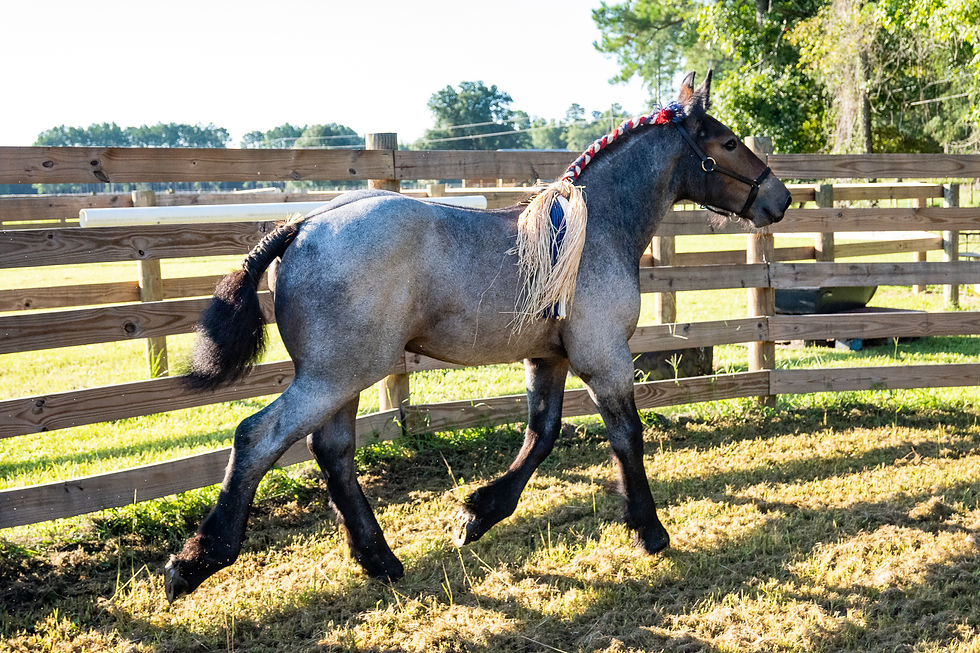
Due to the effects of dominant/recessive alleles, we often can’t tell what alleles a horse carries simply by looking at them. However, there are genetic tests available that will tell what colors and patterns a horse carries by testing a hair sample. The European Brabant Registry of America partners with UC Davis to offer color testing on EBRA horses and tests can be ordered through the online store.


FIRST TIMER'S HARNESS SHOPPING GUIDE
Story and Illustrations By Stacy Pearsall
Many European Brabant owners who are into working their horses in harness are well versed in the myriad of styles and types on the market and have their horses fitted and kitted by now. For those who are new to the breed, or harness work, or both, harness shopping and selection can be daunting. I know - I was totally overwhelmed not too long ago.
Full disclosure, I'm no harness expert, but I am a journalist with sleuthing skills and a passion for research and learning. That, coupled with my own harness selection and purchase experiences, I've put together this no-frills-fundamentals article with support illustrations to help simplify your first-time harness selection process.
1. HARNESS STYLE
Breast Collar Style, also referred to as the "Pleasure" or "Buggy" type harness, has a straight, broad strap (can be padded) that runs across the horse's breast. It's best suited for cart and/or buggy pleasure driving, and some light draft work. A "Marathon" style breast collar has contoured 'v' shape that fits below the windpipe and allows the horse's shoulder better movement. A well made entry level (non leather) draft size breast collar harness will run $500 and up new.
Collar and Hames Style is a great all-purpose harness that will help your horse draft heavier loads, plow fields or pull a range of vehicles. A well made, entry level (non leather) collar and hames single draft harness will run $650+ new, plus the collar which ranges from $200-$400. Tip: The collar is often sold separately from the harness and hames. Tip: Most "farm type" collar and hames style harness require a shaft-loop attachment for your cart that is sold separately.
NOTE: Driving lines and hold-back straps are often sold separately, so don't forget to read the small print and add those to your order if necessary.

2. COLLAR SHAPES
If you opt for the all purpose collar and hame style harness, you'll have to pick a collar based on the shape of your horse's neck. There are three main shapes:
Full Face, which is more padded and best suited for juvenile draft horses with narrow (still growing) necks who are just beginning ground harness training.
Half Sweeney, which fits most draft mare and geldings with thick, but not-too-cresty necks.
Full Sweeney, which is geared toward the heavily crested stallions and beefy-necked horses.
For the first time harness buyers out there, think about what you want to accomplish with your horse. Do you want to hitch them to a buggy and trot on down the road? If that's the case, a simple, well-made breast collar harness will do you just fine. If you want to do pleasure driving and dabble around with a forecart and implements, then you're better off just investing in a solid collar and hames style harness. If you're uncertain about measurements, most vendors have a guide (examples HERE and HERE). Lean on teamsters in your area to help you through the process. If there aren't any around, jump on the EBRA Forum and ask our community for help. We all start somewhere, so let's do this together!
In the meantime, I recommend picking up a copy of the 'Work Horse Handbook' by Lynn Miller that was published in 1980. I know it's 43 years old, but the content is ALL RELEVANT! I have a well-thumbed copy near my fireplace and have the following pages ear-marked: Pg. 117 Measuring and Fitting the Collar, Pg. 140 Harness Fit, Pg. 144-155 Harness Style Variables, and Pg. 160 Measuring Your Horse to Order a Harness. The book is filled with helpful information above and beyond harness and harness fitting, so get your copy ASAP.
*** NOTE: This list of harness vendors above are simply examples of what's available and should not be considered an endorsement by the EBRA ***
HARNESS PARTS & WHAT THEY DO
Crown Piece or the Poll piece: The crown is what holds the cheeks onto the bridle. We make straight one and molded/curved ones. The molded crown pieces are great for horses and ponies that are super sensitive about their ears, as it’s shaped to sit comfortably behind the ears.
Brow Band: The brow band helps keep the bridle in place. If the brow band is too short it can pull the cheeks and the crown piece forward into the eyes and the backs of the ears. A brow band that is a little too long is just fine and doesn’t create any issues.
Nose Band: The nose band is there to help keep the blinders laying flat alongside the equine’s cheeks. It is also helpful in keeping the bridle on the horse’s head. When paired with a gullet strap, which connects the nose band to the throat latch, it makes the bridle even more secure.
Throat Latch: The throat latch is there to help keep the bridle from popping off over the horse or pony’s ears. It doesn’t need to be very tight, but when buckled very loose it can’t do it’s job.
Breast Collar: The breast collar is where the traces attach. It’s there for the purpose of connecting the horse to the vehicle.
Martingale: The martingale is for the Euro style collar and the Deluxe Style breast collar. This is to help keep the collar centered on the horse or pony. Without a martingale the breast collar can pull hard to one side or the other, and end up crooked. They can also pop out in the center and cause the animal to pull just from the shoulders and not also from the chest. So it’s a pretty important harness piece. NOTE: A martingale is not necessary when you are using a straight style breast collar, such as the one that comes with the Pleasure style harness
Saddle: The saddle is the piece of equipment that holds the shafts via the shaft loops. It also connects the front part of the harness (the breast collar) to the back part of the harness (the breeching). The saddle on a driving harness does NOT need to be very tight on the driving horse, unless you are driving in the marathon or cones portion of a CDE. Then you will want it to be a bit more snug to keep things stable while moving fast.
Shaft Loops: Mentioned above, these hold the shafts of the vehicle.
Girth/Belly Band: This is the part of the harness that holds the saddle in place. Again this doesn’t need to be as snug as a riding saddle, unless you are competing in the marathon or cones course of a CDE. I trail drive and do not have my girth very tight at all. There are a few different types of girths:
Wrap strap style which is typically seen in the show ring. This allows the driver to tighten the shafts to the sides of the horse. This is because breed shows don’t usually use breeching and so the only brakes they have are the wrap straps and the girth. Essentially the saddle is stopping the carts forward motion.
Over girth which is a strap that simply comes up from the girth and then buckles into a strap and comes down from the shaft loops. This style of girth allows some float to occur in the shafts and the shaft loops.
Turn Back Strap: This is the strap that runs from the saddle to the crupper. It’s there to connect the saddle to the breeching.
Hip Straps: The hip straps connect the breeching to the turn back strap which connects the to the saddle. Thereby connecting the breeching to the saddle.
Breeching Body: The breeching is the breaking system. This is the stopping power of the harness.
Trace Carriers: Not every harness will have trace carriers. They are especially helpful when the single tree is a little lower than the shafts, which makes the traces have to hang down a little bit. The trace carriers will keep things neat and help to prevent your horse or pony stepping over a trace in a sticky situation.
Traces: Traces are what connect the horse to the vehicle. These are the pulling or pushing part of the harness. So the traces pull/push the vehicle and the breeching stops the vehicle. The traces connect from the breast collar to the single tree of the vehicle.
Crupper: The crupper is the part that goes under the horse or pony’s tail and connects to the turn back strap which, in turn, connects to the saddle. This is helpful in keeping the harness centered on the animal’s back.
Driving Lines: The driving lines are the part of the harness that allows us to communicate with the horse. They go from the bit, through the rein turrets on the saddle, to our hands.

PROMOTING YOUR STALLION
By Stacy Pearsall and Photos by Olga Pushkareva
By creating a well-rounded marketing strategy using the following tips, you can reach more mare owners thus increasing your stallion's profile and profitability.
For years, stallion owners relied on word of mouth and print advertising to reach mare owners, but now you can use a multi-faceted approach to marketing to raise your horse's profile. Now you've got social media and email at your fingertips and should use these advancements in technology to your advantage. Let's dive in!
Stallion Marketing Essentials
Website
If you don't already have one, invest in a simple website where you can profile your stallion. For less than $50 per year, you can increase reach and visibility. Web hosting platforms like WiX, Square Space, Go Daddy and WordPress are all easy website builders that offer plug-and-play templates for the lay-person.
Check out what EBRA Member Olga Pushkareva (V0007) is doing for her stallion AKH Aspen, who she's lovingly dubbed "Turtle," at www.OTFarm.com.
Your webpage should feature your stallion's profile along with other information such as:
Height and Weight
Color Genetics Panel
Pedigree and Registration(s)
Other DNA Testing Profiles
Other Pertinent Health Information
Training and Performance Record
Cover Availability:
Live Cover
Pasture Breeding
Shipped Cooled Semen
Shipped Frozen Semen
Stallion Leasing Opportunities
Breeding Fees, Guarantees and Reservation Requirements
Quality Videos and Photos
Pictures of Offspring and Offspring Registration Options
Social Media Handles
Location and Contact Information

Social Media
Many stallions boast Instagram accounts, but Facebook still persists as the social network preferred by the equine community. The key to a successful Facebook presence for your stallion is to set the account up as a business page. You want fans to “like” his business page, as opposed to a personal account, where users send and accept friend requests. Once your page is set up, all you need to do is post frequently; followers look forward to seeing both old and new photos of your stallion, plus pics of babies and highlights of their achievements. Social media also offers great networking opportunities.
By 'liking' and 'sharing' other pages and posts as your stallion, the overall page reach and engagement will grow. This enables more people to see your stallion's page content.
TIP: Don't spam other pages or feeds. If someone is sharing a photo of their horse, or promoting their own stallion, don't drop yours in their comments to compete - that's just bad social media etiquette. Just "Like", or don't, and move on.
TIP: Create an original post of your own on stallion and/or draft related Facebook Groups. Share a photo or video accompanied by a brief anecdote or backstory. Encourage folks to like, follow and share.
TIP: If you see a mare owner seeking a stallion, share one top-notch photo of your stud and be sure to include their FB page and/or website.
Videos
Given geographical hurdles, mare owners often cannot go to view stallions in person, so providing entertaining and/or informative videos of your stallion in motion, at-work, and at play is a great way for mare owners to get to know your stallion, albeit virtually.
A good quality promo video is also a win! It should show the stallion’s conformation, athletic prowess, aesthetic appeal and disposition.
You can hire a professional to choreograph, capture and edit the video for you. The final product should be a website landing page worthy video that can be shared on social media. To hire out this service, you can expect to invest $600-$1,200.
Or, you can send your video clips to an editor like Masterworks who will put it together for you for a fee.
Or, you can do it yourself from start to finish.
No matter which direction you go, you should:
Create a YouTube channel for your farm and/or stallion, then upload the video and share it.
Create a Facebook and Instagram page for your stallion where you can share videos of your stallion. (Pro tip: Native video posts receive better Facebook engagement and reach than posts that link to YouTube videos.)
Photography
Mare owners pay close attention to detail, and that’s why good images are essential. Professional photographers give you the most bang for your buck. A professional photographer will know how to set your stallion up and pose him suiting his conformation and structure. A variety of shots engages your social media audience throughout the year. For a horse photography session, you may expect to pay $500-$1,000. The fee often covers the consultation, shoot, post production and limited usage. FYI: Some pros may charge a retouching fee and may also have commercial use fees.
Check out a list of horse photographers HERE and find one near you.
If you can't afford a photographer, check out the EBRA's helpful photography tips HERE. Remember, the difference between securing a breeding a or not may come down to how your stallion is represented and captured in photos.
Ad Design
Professional ad designers not only have a knack for enhancing photographs, but they can also help you establish a logo for your stallion and help you maintain a recognizable look – his “brand,” if you will. The talented designers at the European Brabant Registry of America can help you create a winning ad and/or EBRA Stallion Listing. Contact Info@EuropeanBrabant.com for details.
Thinking Outside the Box
Breed Ambassador
Become an EBRA Breed Ambassador where you can access the breed booth, show banner, educational materials and hand-outs. By sharing more about the breed and its incredible qualities, mare owners will be more likely to want to cross their mares to your stallions. Add your horse to the EBRA's Stallion Listing page and drive traffic back to your website and social media pages.
Swag & Such
Use a service like Vista Print to create stallion swag that you can handout at events. Business cards have the HIGHEST return on investment (ROI). At a minimum, you should have business cards with your stallion's full profile confirmation photo on the front and your contact information on the back. Through Vista Print, you can create a custom QR Code that can be added to your cards and other swag. This allows mare owners the ability scan your code and save your website, thus ensuring they can find you later! Just think... you can order 100 cards for just $18. It's estimated that 10.5% of business card recipients will follow through. That's ten new clients who may become repeat breedings in the future. Worth it!
Other fun and useful give away items that won't break the bank are:
Return on Investment
While the above may look scary, it's really not that bad. If you budget just $1,000 per year on media, marketing and swag, you will increase your return on investment (ROI) five to one, or higher if you offer shipped cooled or frozen semen. The short of it is, you've got to spend money to make money.
Plus, you have to put energy into your website and social media sharing. You can build a website or Facebook page, but you still have to show folks how to find it. Provide fun and entertaining content of your stallion and ask folks to "like" and share." Give incentives such as the give aways listed above. The efforts you put into marketing will yield positive results, promise.
Give these tips a try. After the first year, determine your ROI. The math to measure your ROI is actually quite simple. Your net profit is just your stud fee and chute fee revenue minus your costs of doing business and your marketing investments. For example, if you invested $1,000 into your marketing, $1,000 for stallion collection, and $1,000 for mare care, that's $3,000 in expenses. Then let's say you gained ten new clients from those wonderful QR code business cards and they each purchased a single breeding at $1,500 a pop, you've earned $15,000. That's an ROI of 5:1! That's $12,000 in your pocket.
When the revenue starts climbing, increase your marketing and media budget accordingly. After all, you can get back at least 5x the investment.
/// NOTE: The above marketing fee investments and stud fee examples are simply hypotheticals to demonstrate ROI. You must determine your stud fees and marketing investments based on your own budget and breeding goals. EBRA Members feel free to jump on the FORUM to discuss further! ///


































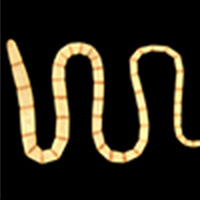

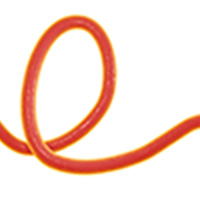



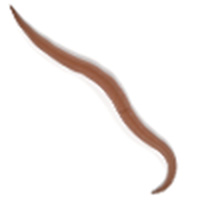

















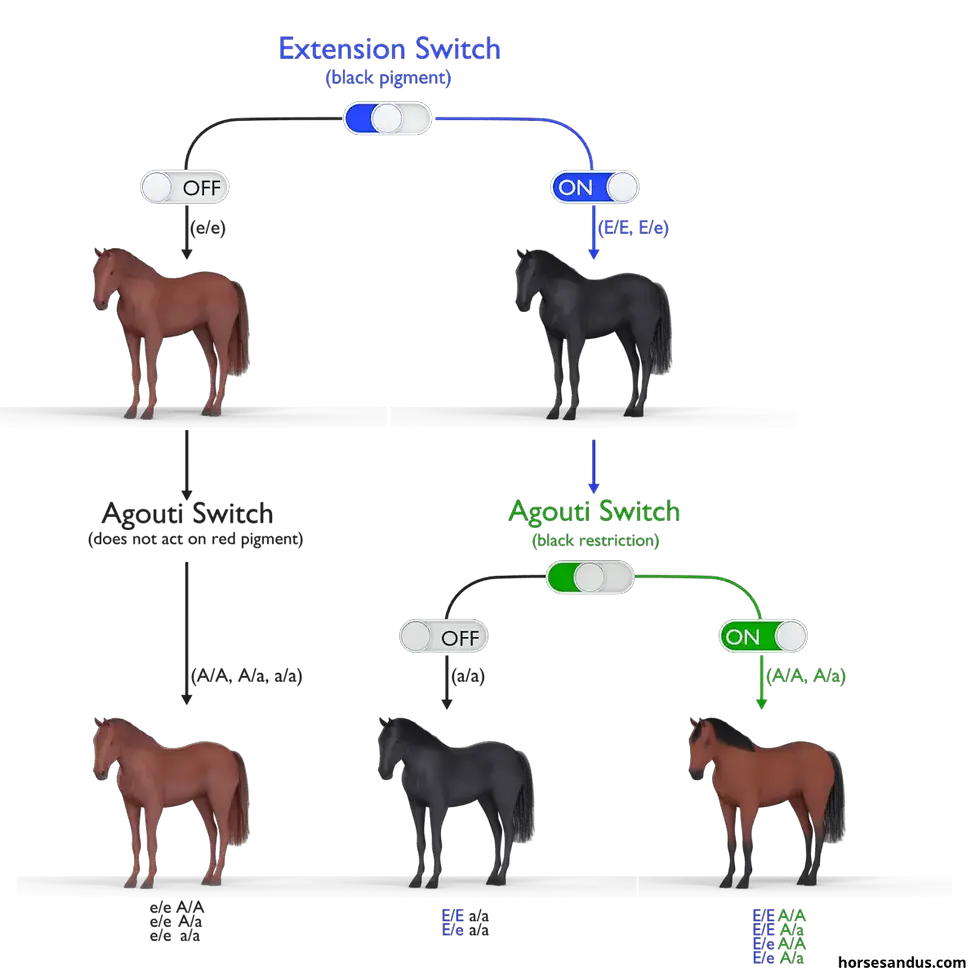




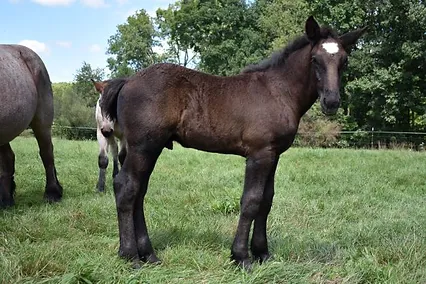







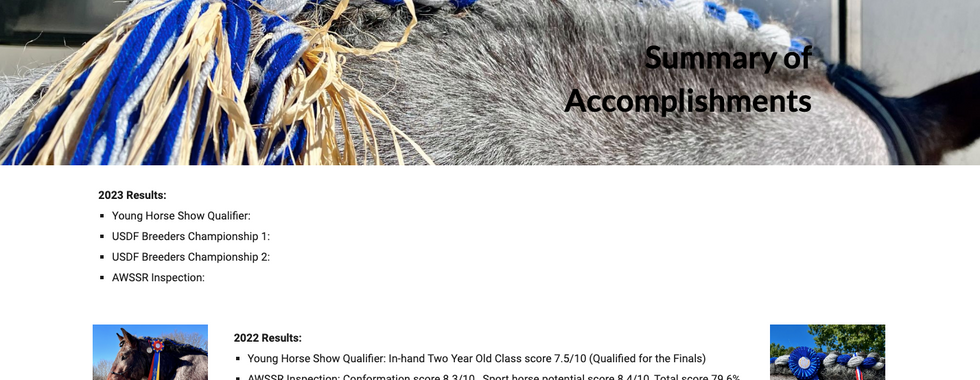



















Comentarios